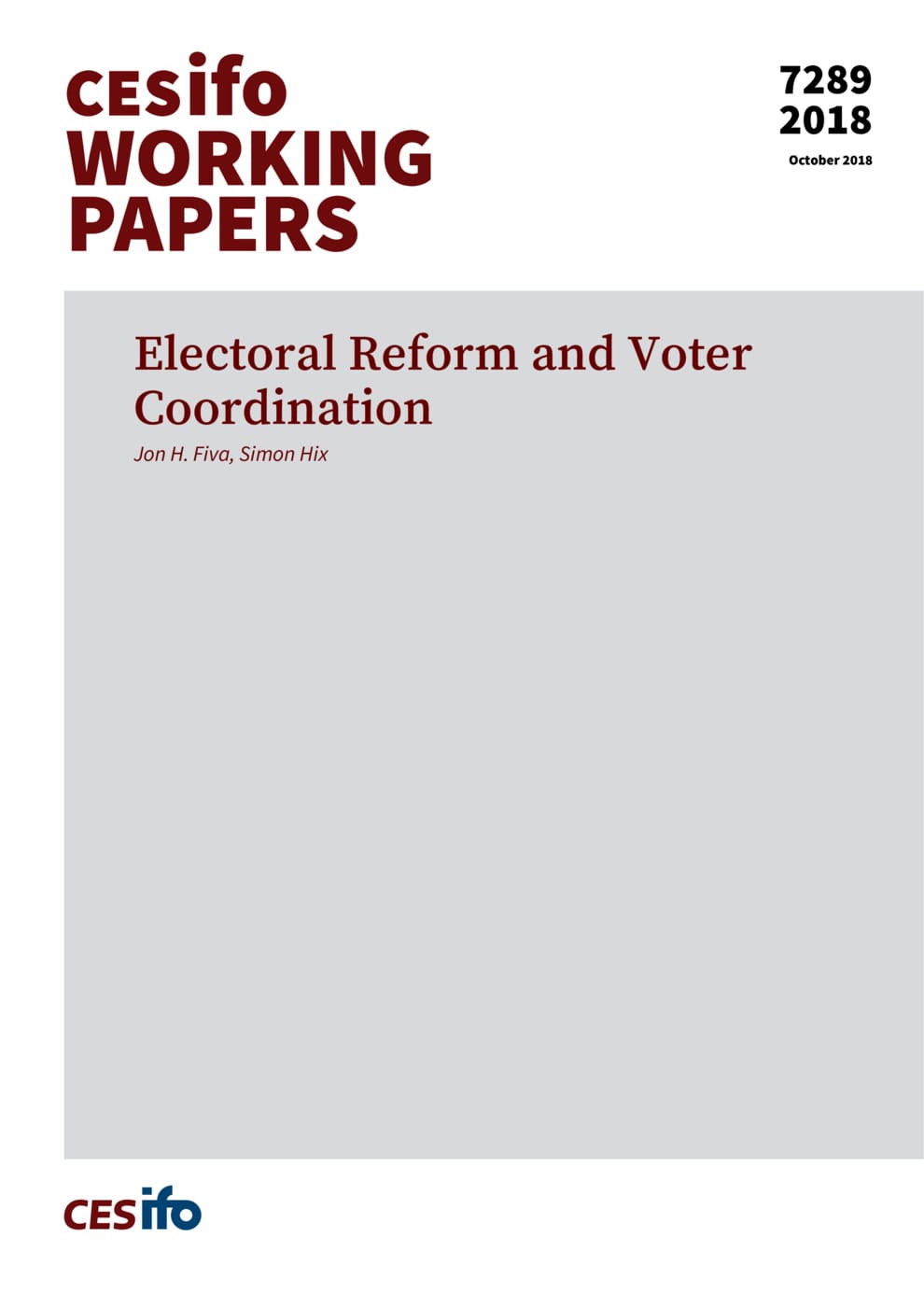Electoral Reform and Voter Coordination
CESifo, Munich, 2018
CESifo Working Paper No. 7289

Electoral reform creates new strategic coordination incentives for voters, but these effects are difficult to isolate. We identify how the reform of the Norwegian electoral system in 1919, when single-member districts (SMDs) were replaced with multi- member proportional representation (PR), shaped voter behavior. Our dataset allows us to measure vote-shares of parties in the pre-reform SMDs and in the same geographic units in the post-reform multi-member districts. The electoral reform had an immediate effect on the fragmentation of the party system in Norway, due in part to strategic party entry. We find, though, that another main effect of the reform was that many voters switched between existing parties, particularly between the Liberals and Conservatives, as the incentives for these voters to coordinate against Labor were removed by the introduction of PR. This has implications for how we understand electoral reform, particularly in the early part of the 20th century.
Public Choice
Public Finance